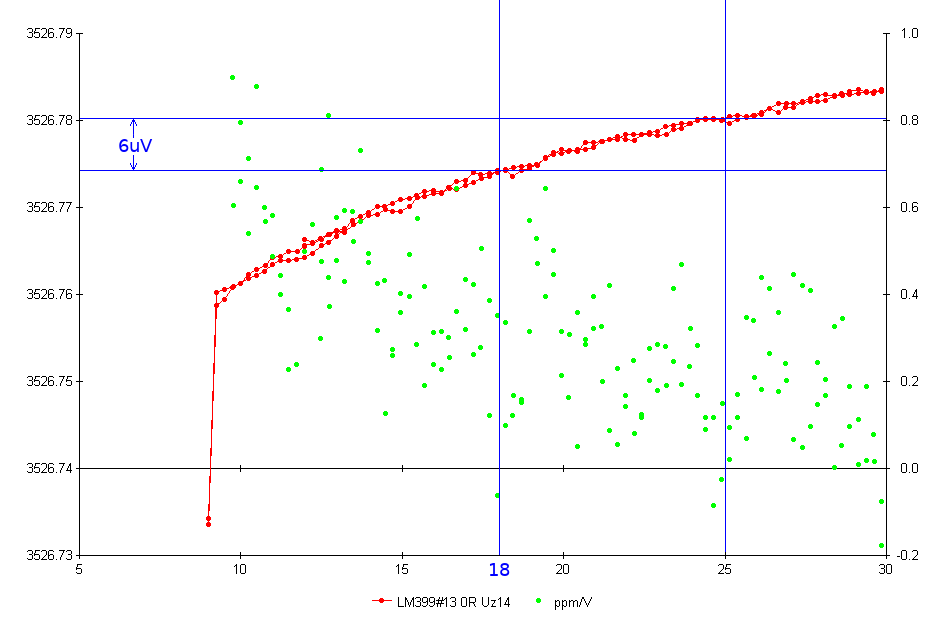I hope the 24V for the heater are stabilized. the LM399 is sensitive to heater voltage variations.
hi Andreas,
i've been thinking about this one for the last few days. over in the LM399 thread, back in 2014, you made some measurements of this effect with the following results:

(copied from:
https://www.eevblog.com/forum/metrology/lm399-based-10-v-reference/msg441913/#msg441913)
i've added in blue lines to mark off the region between 18v and 25v heater voltage (corresponding to 6x Li-Ion cells going from fully charged at 4.2v each, down to a 3.0v cutoff when fully discharged), and the corresponding change in zener voltage. in the setup you used at the time, this works out at about a 6uV drop after the 2:1 scaling, or 12uV directly at pins 1 and 2 of the LM399.
i presume that each run was conducted over a relatively short time interval? has anyone else
repeated and verified this experiment since? i'm also wondering if there could be mechanisms other than the change in heater voltage coming into play; the 12uV shift in reference voltage corresponds to about 1.7ppm and thus is tantalizingly close to the 1ppm level that i'm trying to keep below.
cheers,
rob :-)